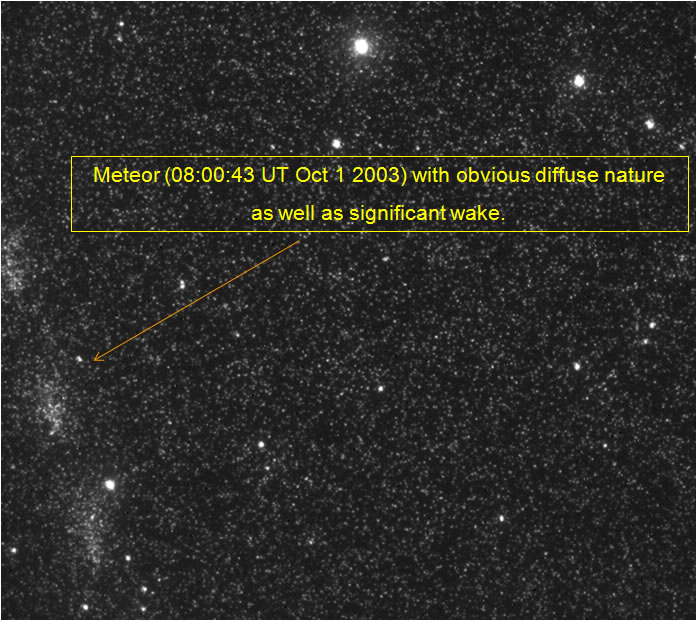What are Electro-Optical Observations?
Electro-optical systems are devices which amplify ambient light many times to make faint sources detectable. They are often called nightvision or starlight devices as the systems often make use of ambient starlight to make night scenes detectable to the human eye. The image intensifiers used by the Western meteor group include second and third generation image intensifiers lens coupled to various CCD cameras. The components used to amplify light in an image intensifier are shown below (from Hawkes, 2002):

The microchannel plate (MCP) consists of tubes which channel the photoeletrons to the output phosphor on the back of the intensifer tube. Design and principles of operation of typical intensified CCD cameras (ICCDs) can be found here. We have several different types of portable and permanent intensifier - camera combinations used for different observational meteor projects.
Portable Cameras used by the Western Meteor Group
Deep Gen II system
This system is designed for detection of very faint (+8 to +9) meteors over modest (~ 5 degree) field of view. The components of the system are shown below:
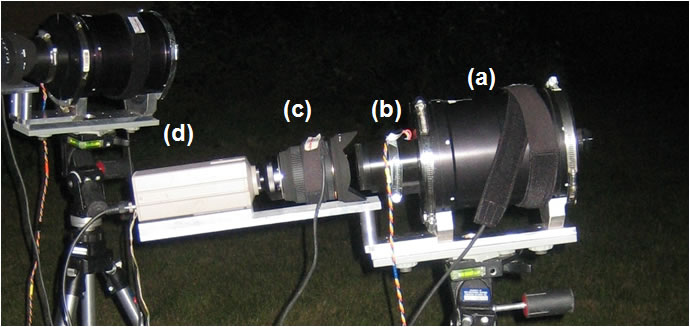
Component (a) is a 155mm f/1.2 Catadioptric lens, (b) is a Litton 25 mm diameter Generation 2 image intensifier, (c) is a relay lens which focuses the light from the output phosphor at the back of the Gen 2 to the CCD camera, shown as element (d). The CCD used is a COHU model 4910 which records 30 NTSC frames per second at 640x480 resolution. This output is then streamed to a digitizer and computer and stored to disk. An example of a meteor event detected with the system is shown here.
This movie shows the output from the deep gen II system slowed down a factor of 10. The field of view is 6.6 degrees and the faintest star visible has V= +11. The meteor has a peak brightness of +5.5.
Wide Field Gen II
These systems use the same Litton 25 mm diameter Generation II image intensifer having an S20 spectral response photocathode producing near visual response, as the deep gen II systems but have an objective lens with a much smaller focal length (and hence much wider field of view). The system (shown below) consists of an objective lens closely mounted to the Gen II intensifer. The intensifier output is captured using a macro lens attached to a COHU model 4910 CCD at the end of the tube assembly. The performance of these systems depends on the objective lens used, but for a typical 25mm f/0.85 lens the field of view is 30x25 degrees to a limiting stellar magnitude near +7.5.

Wide Field Gen III
These cameras use ITT Generation 3 Nitecam Model 380i image intensifiers. These systems employ a P40 phosphor with strong response in the red. The intensifer is mated to a COHU 4910 camera via a lens relay. Camera output is fed into a digitzer and directly streamed to disk.
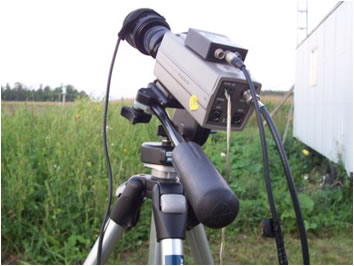
Using a 25 mm f/0.85 lens, these systems are able to achieve stellar limiting magnitudes of +8.5 in a 20x30 degree field of view.
Gated Intensified Camera
For extremely short (microsecond) instantenous meteor exposures a specialized gated image intensified large format CCD camera is in use. This system is a commercially available digital Qimaging Extended Blue Intensified Retiga camera, details of the basic system can be found here. Its unique capabilities allow very high temporal and spatial measurements of meteors and has been used in deceleration, wake and fragmentation studies.
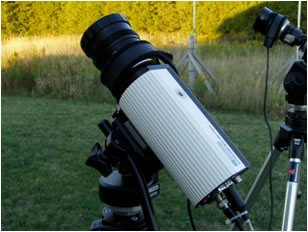
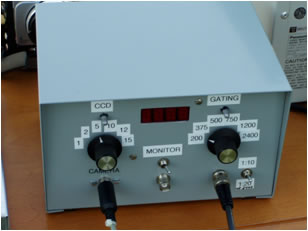
The system supports C-mount objective lens and a variety of exposure times. The CCD is 1360x1036 square pixels of 6.45 microns size. The camera is a 12 bitdepth system and is able to produce 5 frames per second at maximum resolution and bitdepth. Gating is externally controlled by a custom signal box which triggers both CCD exposure times and gating of the intensifer. A meteor captured with the gated system is shown below. In this example, the pixel scale is 0.7 arcmins, the field of view is 16x12 and the lens being used is a 50 mm f/0.95. The system is recording at 5 frames per second and the gating is set to 200 Hz; hence each dot in the image along the meteor trail corresponds to an equivalent exposure of 5 ms. The limiting stellar magnitude in this image is near +9.
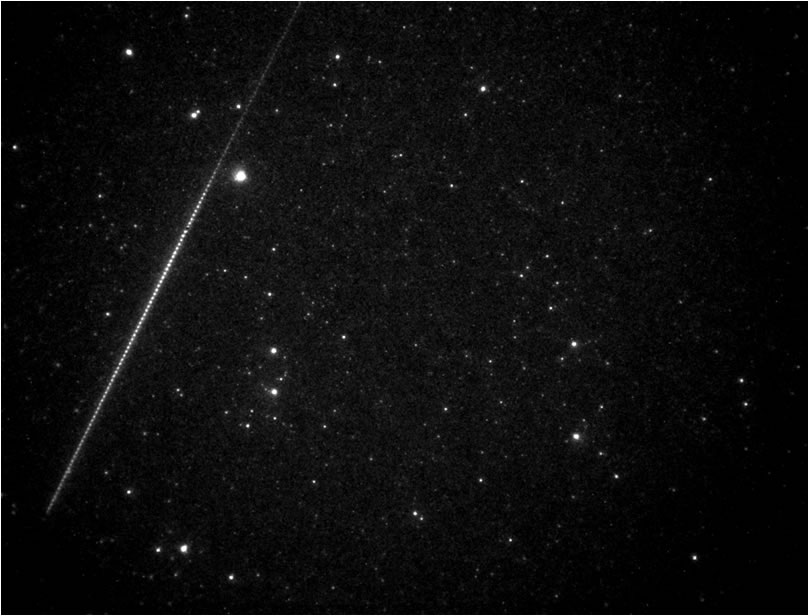
Telescopic Gated Intensified Camera
Another configuration used for ultra-faint imaging of meteors is the attachment of the gated camera to a large telescope. The goal of such a setup is to examine wake and fragmentation in smaller meteors.
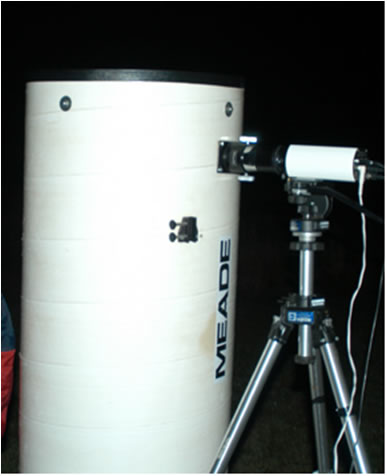
In this setup the gated camera was coupled to a 0.4m f/4.5 Newtonian telescope. With this configuration the field of view is 24x19 arcmins. The intensifer was set to produce exposures equivalent to 0.53 ms per gating signal. The faintest detectable stars are near +12 and the faintest meteors are near +10. Some examples of events are shown below:
Event showing no wake:

Gross fragmentation behaviour:

Extremely wide trail radius (almost 10 m):
